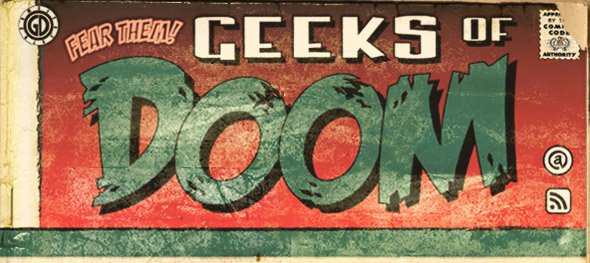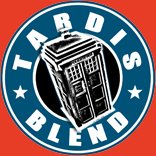
 Saturday Night Fever
Saturday Night Fever
Directed by John Badham
Starring John Travolta, Karen Lynn Gorney, Joseph Cali, Paul Pape, Barry Miller
Paramount Home Entertainment
Release Date: May 5, 2009
Saturday Night Fever is a portrait of a particular passion drowning as much as it can life’s harsh and unforgiving reality. Almost as if he’s hypnotized, John Travolta‘s Tony Manero struts down the streets of Brooklyn in a black jacket that’s worn over a red buttoned-up shirt that’s not fully buttoned. He’s brim full of confidence even while carrying a can of paint he got for his boss at the hardware store. He doesn’t know he’s carrying that can, doesn’t know that he’s at the age of nineteen and still universally entrenched in his dreams, and he doesn’t know anything else that isn’t relevant to dancing. His mind and thoughts are unable to resist what the night holds for him and his equally confident friends at the disco dance hall in the 2001 Odyssey club. The present is what matters to Manero, not the future: “Fuck the future,” he tells his boss.
Tony from the start of the movie is a different Tony when the film reaches its end. It’s a beautiful character study. Watching him progress from his rebel attitude into manhood as the movie deepens is what makes director John Badham‘s Saturday Night Fever a great film. Bedham knows what he’s doing when he laces his film with vulgarity, booze, sex, and more vulgarity. He’s doing it for a reason. The multitude and excess of such actions are used to make the audience as familiar with it as Tony is. Exposure to this makes Tony a one dimensional character. He’s surrounded by a wrecked home life, reckless friends, and a passion for dancing; a great talent but becomes obscured when applied to the future of Tony. Bedham believes strongly in this atmosphere so strongly that when an outsider attempts to wedge their way in they are looked upon as a foreigner, even though they seem to be more mature, successful and promising.
Screenwriter Norman Wexler eases two individuals into the picture, one of them being Stephanie (Karen Lynn Gorney). She is a successful 20-year-old living and working in Manhattan and doubling as a dynamite dancer. Tony sees her at the Odyssey and wants to be dance partners and participate in a disco dance-off with her. Though Tony salivates over her beauty the two rarely show each other sexual desires. The only instance of love making occurs when the two dance together. The characters in the movie treat dancing like sex. Tony is so particular in whom he dances with that he says to his friends “you make it with some of these chicks, they think you gotta dance with them.”
But when Stephanie enters his illusion-filled life she makes him aware of life by telling him in honest yet brutal words: You live with your parents, you hang with your buddies, and on Saturday nights you burn it all off at 2001 Odyssey. You’re a cliché. You’re nowhere, goin no place.
In the Odyssey he is king. He’s living his dream and absorbing himself in magic. But outside his safe haven he is a worker at a hardware store, a son used by his father who only vents at him, and an uncultured cliché of young men in the 1970s. When Stephanie enters into his minimalist and narrow life she emphasizes her connections she has with reality and serves a dose of it his way.
If Tony is confounded by the way she presents reality, he might perceive and acknowledge it when his brother Frank (Martin Shakar), a former priest, comes home to announce his departure from priesthood. A passion in which he swore to devote his life to has suddenly been extinguished and is eye-opening, and maybe even accurate in Tony’s eyes. Can this happen to Tony? Surely Tony’s dancing extensive pre-dance ritual can be paralleled with Frank’s preparation before a Sunday mass. When Frank enters into the picture (the second character Wexler introduces to us) he’s a fundamental essence of a soul that has lost what it loves to do and how he’s reduced to a wandering and helpless soul.
Stephanie and Frank both are characters used to improve and deepen the character of Tony Manero. Prior to these two forces Tony was an image of an incomplete man, a fragmented mind that still held his dreams and illusions in an unabashed fashion. Bedham decorates the atmosphere around Tony with many influential and dissatisfying figures and activities. Each of them in their own mechanical way contributes to Tony’s curious conscious. Moment by moment and scene after scene he becomes more denying of his routine he swore by for years as he attempts to incarnate an inner-self that can come to grips with the reality of life and the reality of his own being. He can only live with the magic of life up until a point when he’s forced to confront his future.
Taking Saturday Night Fever as primarily a chronicle of the 70s and the disco era obscures the film’s achievement, both as a work of art and a testimony of finding one’s self. The themes dealing with man’s outlook on woman and young people yearning to escape from boredom and routine still is prominent today. All of which, of course, is made possible by Travolta’s star turning performance mixing coolness with a child’s vulnerability.
Hi-Def Picture– This is one of the most surprisingly good Blu-rays I’ve ever watched. Never in a million years did I expect this transfer to be so crisp and vibrant. Colors are as vivid as they can possibly be. The previous DVD versions contained washed out colors, blotches of grain on nearly every scene, and night sequences had to be viewed through night-vision goggles to capture the slightest of movements. The upgrade from DVD to Blu-ray is enormous. Bedham having shot on location in Brooklyn brings a sense of urgency and realism to the picture. The Blu-ray transfer brings depth to every frame in the picture, making the eyes work like never before. Instead of concentrating on Travolta strutting down the streets, our attention is diverted to focus on other pedestrians and the scene’s backdrop in which our eyes our constantly drawn to due to the clarity of the entire picture. Usually with older films, most notably ones made in the 70s, the night scenes and black scenes are distorted and grainy. Not here, with this 1080p transfer Saturday Night Fever is revived to entrance and entice an entirely new generation.
Special Features:
Audio Commentary: Director John Badham lavishes in his creation. He explains Travolta’s stardom, discusses the custom clothes that were specifically made for this film and he keeps announcing his “luck” for being able to film on location rather than sets. The Bee Gees are also discussed for their cheapness and his minimal regrets he has for leaving out shots that he wasn’t able to accomplish due to the film’s short production time. All in all Bedham’s commentary is insightful and worth the extra watch.
Dancing like Travolta with John Cassese – HD (9mins): Cassese teaches viewers to dance like Travolta and Gorney from the climactic competition scene. A step-by-step routine is illustrated before us by Cassese and a female dancer. At times a bit cheesy.
Documentary: “Catching the Fever” – HD (61mins): One of the most fascinating features on any Blu-ray I watched, “Catching the Fever” literally throws everything at its viewers (from the choice of choosing the Bee Gees, to the fashion of the era), even the disco ball. I was literally swamped with the amount of information given about the film, the stars and the fun facts dished out by Badham, Karen Lynn-Gorney, Martin Shakar, and Bee Gees‘ Barry Gibb. Almost everyone involved in the film contributes except Travolta. The sections are divided up into six different realms: “A 30 Year Legacy” (15mins), “Making Soundtrack History” (13mins), “Platforms and Polyester” (10mins), “Deejays and Discos” (10mins), “Spotlight on Travolta” (4mins), “Back to Bay Ridge” (9mins).
“70s Discopedia” – HD: An in movie experience representing a VH1 style pop-up video facts stating information about the movie. Not so much information about the production process of the movie but more involved in how disco helped shape the movie and how the movie helped shape disco.
Deleted Scenes – HD: Three relatively short scenes that are given the option of having Bedham deliver commentary to each of them.
Movie- **** out of ****
Picture Quality- **** out of ****
Special Features- **** out of ****
Verdict- PERFECT MOVIE, A MUST-OWN






NOw I want to buy this.
Great review!
Comment by Jerry — May 17, 2009 @ 11:17 am